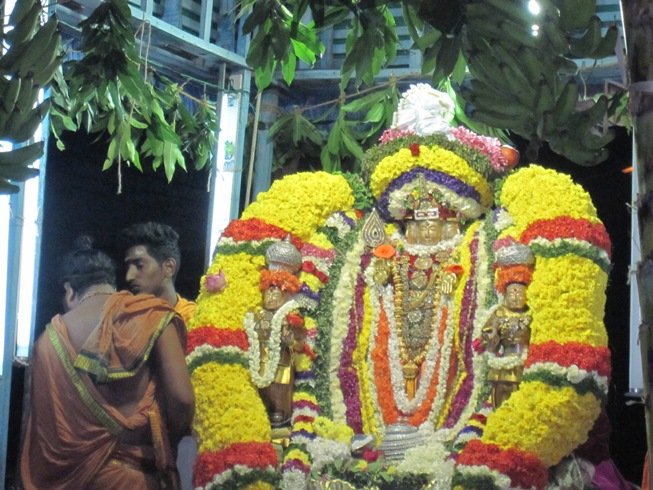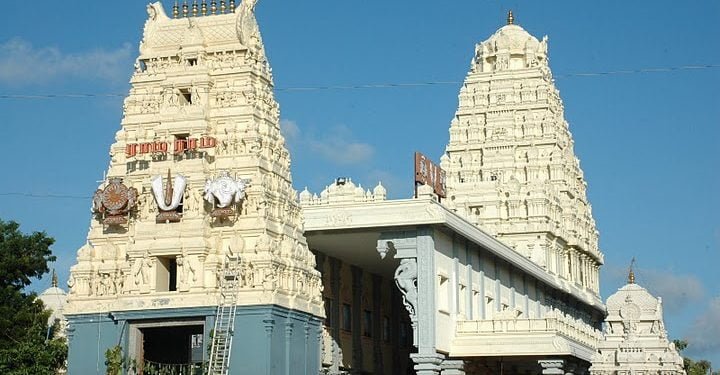The Kumarakottam Temple is a Hindu temple in Kanchipuram, India. It is dedicated to Murugan, the Hindu war god and the son of the god Shiva and his wife Parvati. The temple is also known as the Subramanyam Swamy Temple. The ancient temple was rebuilt in its present form in 1915.

Legends Associated with This Shrine
The temple legend in the Kandapuranam ? the Tamil version of the Skanda Purana which is mainly devoted to Murugan ? states that Murugan had imprisoned the creator-god Brahma here for the latter’s ignorance of Om, the Sanskrit single syllable mantra which is sacred in Hinduism and himself assumed the role of the creator in this place. However, Murugan’s father Shiva had ordered him to release Brahma. When Murugan realised his mistake in not obeying his fathers instruction, he did penance before a Linga , which subsequently was worshipped by the name of Devasenapatisar, literally, the Lord who was worshipped by Devasenapati . In another version, it is said that the penitent Brahma is said to have been released by Shiva after he worshipped Murugan after learning his lessons in humility. The temple is one of the 21 major temples in Kanchipuram and is an important pilgrimage centre. Saint Arunagirinathar has sung hymns in praise of the Murugan icon of the temple.

Architectural Relevance of This Shrine
The temple, as now rebuilt, has the temple pinnacle above the main sanctum, which is built in granite and is in the shape of a dome called the chakravimanam (circular dome) which is a Chola period structure. The corbels and the pilasters with epigraphs decorate the walls of the temple. The temple has two prakaramsand many of parivara devatas are installed in sub shrines around it. The central image of Murugan is uniquely depicted as Brahma-Shasta, holding a kamandalu (water pot) and beads of Rudraksha. The linga worshipped by Murugan is deified in a separate shrine within the temple complex and is called Devasenapatisar or Senapatisvara.

Shrine’s Map Location and How to Go There
By Road
Kanchipuram is 75-km away from Chennai and is well connected by a network of roads. There are frequent buses from the city to Chennai, Bangalore and other places. For local transportation, bicycles can be hired from the shops near the bus stand. Cycle Rickshaws and auto-rickshaws are also available on hire to move in and around the city.
By Rail
Trains for Kanchipuram are available from Chennai, Chengalpattu, Tirupati, and Bangalore.
By Air
Chennai is the nearest airport to Kanchipuram. One can take flights for most of the important Indian cities and important cities abroad from Chennai.
Events Celebrated at This Shrine
A popular festival held here is Skanda Shashti (in November), the 6th day of bright half of the lunar month named after Murugan, also known as Skanda (Kanda in Tamil). During the month of Kartigai (NovemberDecember) between the darker half and the brighter half of Moon, celebrations are held in the temple when a very large number of lamps are lit in the temple. The worship in the temple is scheduled six times daily. In every lunar month on the days of the rising star of Krittika, festival is held in the temple when the very large number of devotees offer prayers to the deity. Each temple in Kanchipuram celebrates the Brahma festival, as Brahmotsavam, when processions of gods are held in the morning and evening hours.
Extra Information About this Shrine
Kandapuranam Mandapam (Hall) in the Kumarakottam Temple complex where the epic Kandapuranam was released Kachiyapper, a Tamil and Sanskrit scholar, was the priest in the Kumarakottam Temple. He composed the text Kandapuranam. The hall, the Kanda Purana Arangetra Mandapam where Kachiyapper composed the text still exists in the temple complex. Peacocks flock the premises even now.Kachiyapper wrote the epic in six cantos comprising 10,346 stanzas. It is believed that the first line of the first stanza was written by Kachiyapper’s patron deity, Murugan himself. The god is also believed to have corrected the 100 stanzas written by the priest during the day. The poet took his composition to the god and rehearsed it. Even now the priests in the temple are the descendants of Kachiyapper.













































